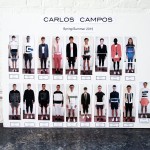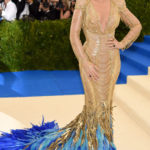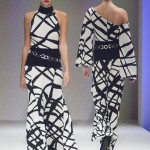A few weeks back, I began a series on discussing the various laws that afford protection to fashion designers. There might seem to be a wide array of options for protection, but that this is not really the case. Each area, copyright, patent, trademark, etc, are all laws for different aspects within a designer’s work and have very rigid qualification standards. This piece is a more in depth look at the area of patent law with regard to designer protection. More specifically, design patents. There are 5 main questions a designer must consider before attempting to obtain a patent:
- Will my design meet the patent requirements?
- How much protection will I be afforded?
- Is it worth the time?
- Is it worth the cost?
- Will the design still be relevant, in terms of success and sales, when the design patent is granted?
The Standard
Before even attempting to obtain a design patent, one must see if their design meets the rigid requirements. There are two types of patents. First, there is a utility patent, which protects the way a product is used and works, such as machines. Second, there is a design patent, which protects the way a useful product looks. So right from the definition, is a requirement in the product being useful. Further, there is a requirement that the article be new, original and ornamental. Thus far, with fashion, clothing has not had the most success, but there are a few success stories.
 One such example is from True Religion, a brand of denim/jeans. The patented area is solely to the ornamental stitch pattern applied on the jeans. The design patent gives the owner the right to prevent others from making, using, or selling a product that so resembles the patented product that an “ordinary observer” might purchase the infringing article, thinking it was the patented product. But this brings up the next question a designer would need to consider, what is actually being protected?
One such example is from True Religion, a brand of denim/jeans. The patented area is solely to the ornamental stitch pattern applied on the jeans. The design patent gives the owner the right to prevent others from making, using, or selling a product that so resembles the patented product that an “ordinary observer” might purchase the infringing article, thinking it was the patented product. But this brings up the next question a designer would need to consider, what is actually being protected?
What is protected?
When it comes to obtaining a design patent, it doesn’t mean a designer still won’t have to work at maintaining that protection. Take a look at the design patent example with Stella McCartney. A design patent was granted for the successful mesh polka dot dress from the brand, the “Lucia.” The only portion of this dress that receives protection is the dotted portions, including the dots. So while yes, if another dress had the other areas in a different fashion or form, but still utilized the sheer cutout polka dot style as Stella does, it could be infringement. The key component is that a court would likely require that for infringement, the competing garment would need to utilize dotted portions of the same shape and pattern. In examples such as with Stella McCartney, or True Religion, the design patent is very narrow, only to the patented portion, which may or may not disallow others from still designing similar pieces that is not deemed infringement.
There are several other factors that a designer must consider before moving forward with acquiring a design patent. It may be that their work meets the requirements and could offer some protection, but the remaining factors all go to 1 main question, is it all worth it in the long run? One such factor area to consider is with that of time. It could take up to a year or even longer to be granted a design patent. If the designer chooses to continue selling a piece before then, there is still all that time where no protection is being granted. A designer might consider holding off on a piece that could receive protection and this goes to a 2nd factor.
This factor being, if waiting with all that time in this process, will this design still be relevant? Fashion trends and style are always changing and evolving as seasons change and upon new trends emerging. A piece that might work now in Fall of 2013, may not be a trend or succeed as well the following year. Most likely, a designer would want to patent a piece that is truly a staple with fashion, a piece that would rarely go out of style and a garment that could be worn for a long time to come. Looking back for example to the True Religion jeans-jeans are items that will always be worn and generally don’t vary much in color so the chances of jeans not being relevant are slim to none. Even in the case of Stella McCartney and this dress, it is also the case that this dress could be relevant and successful for many years to come. I am sure the dress is offered in other colors, but even just with black, a woman’s need for a great black dress to be included in her wardrobe will always be a necessity. Trends such as sheer effect, polka dots and cutouts are also seemingly trends that will be used in garments for many years to come. Finally, a designer must consider cost. This process would likely require the use of an attorney and all of the filing fees. This cost should be weighed against potential success of the patented garment and if it fits within the designer’s budget.
There are some modern case examples one could look at and a few perhaps appear that the design patent and process do yield a certain amount of protection to designers. Victoria Secret released the bra, 100-way strapless convertible bra. However, Katherine Plew alleged that this bra was covered under her registered design patent. The issue was that the loops on the bras, whole not placed in exactly the same location, did create a result of arranging straps that was effectively the same. This case ended up settling.
There was also the case with LuLu Lemon and their accusation that Calvin Klein was selling yoga pants, which were infringing upon their design patent. LuLu’s design patents were encompassing of a waistband for one pair and then the styles of the yoga pants for the other pairs claimed as infringing. This case, also ended up settling.
In summary, the prospects of obtaining a design patent should be considered when the innovative work involves a product having unique ornamental features. There are recent cases that demonstrate that a designer can protect their designs thru this process, but the designer must still make certain that their own design fits the requirements. The possibility of obtaining other forms of intellectual property protection, in addition to the design patent, should also be considered.
Related articles
- Design Patents are Still Relatively Quick (patentlyo.com)
- The Power of Portfolio: Strong Design Patents III (ipwatchdog.com)
- The Surprise Leader in Design Patents (forbes.com)
- Should You Consider a Design Patent? Pt. 1 (artlawjournal.com)
- Strong Design Patents: The Power of The Broken Line (ipwatchdog.com)










Pingback: Cartoon fashions items. | Yasmeena El sabeh